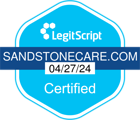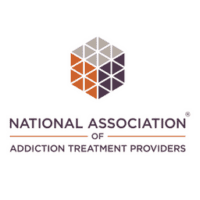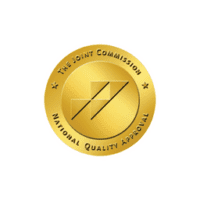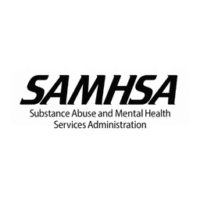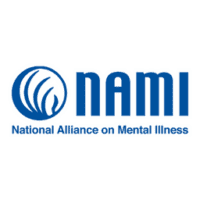Other Drugs, New Psychoactive Substances, and Addiction


New psychoactive substances are being created at an alarming rate, with 643 new substances being registered in the United Nations Office of Drugs and Crime (UNODC) in 2015. These substances include synthetic cannabinoids, synthetic cathinones, and phenethylamines.
Additionally, several of these substances are structurally diverse and do not fit in the aforementioned groups.
A new class of substances is emerging—they mimic illegal substances or are close variations on existing drugs. They pose a particular danger because they tend to be as-yet unregulated, and there is little research on their short and long-term effects. Public health officials call these New Psychoactive Substances, or NPS.
This class of drugs also includes synthetic cannabinoids.
As with all psychoactive substances, teens and young adults need to be especially wary of NPS. The human brain is still very much developing until the mid-20s, and substances that act on the brain’s reward pathways can have a lasting impact.
Psychoactive substances, particularly potent and unregulated ones like NPS also have the potential to trigger psychosis and underlying mental illness.
Synthetic Cathinones are a chemical compound created to mimic the natural compound found in the khat plant. This is a shrub grown in parts of Africa and the middle east with mild stimulant effects. The synthetic form of the compound produces much stronger effects than the organic compound.
Synthetic cathinones have no relationship to actual bath salts such as Epsom salts, which do not have psychoactive properties. They got this name because synthetic cathinones are often marked as “not for human consumption,” and then labeled as bath salts, or jewelry cleaner, in order to avoid regulation.
Synthetic cathinones are marketed as a cheaper alternative to stimulants like cocaine or Molly. Synthetic cathinones are usually sold in small plastic or foil packets, and take the form of small white or brown crystals.
Synthetic cathinones can be swallowed, snorted, smoked, or injected. The most severe effects tend to be reported from snorting and injecting.
Some of the reported and witnessed effects of synthetic cathinones include:
Synthetic cathinones have been shown to be addictive in clinical trials with rats, and human users report severe withdrawal symptoms including anxiety, depression, trouble sleeping, paranoia, and tremors.
Molly, slang for MDMA, a popular club drug, has gained popularity as a supposedly more pure alternative to Ecstasy, which is often laced with methamphetamine or other stimulants. However, lab results are showing that a significant portion of Molly being sold is laced with synthetic cathinones, unbeknownst to users.
Caffeine powder is sold online and can appear attractive to teens and young adults looking for quick energy. However, one teaspoon of the highly concentrated powder is equivalent to 25 cups of coffee, a lethal amount. A high school senior in Ohio died of an overdose of caffeine powder in 2014.
A highly toxic synthetic opioid that originated in rural Russia, there have been reports that Krokodil has begun popping up in the United States in the last few years. A variation on desomorphine, Krokodil is produced by mixing morphine with toxic chemicals such as lighter fluid.
It gets its name from the scaly green-grey patches of dead skin that appear at the injection site.
N-bomb refers to any of three closely related synthetic hallucinogens, sold as a legal alternative to LSD. Also called “legal acid,” “25I,” and “smiles,” these hallucinogens are much more powerful than LSD and even small amounts can lead to heart attack, seizure, and death. Some people take these drugs believing them to be LSD.
At least 19 young people died between 2012 and 2013 from taking one of these substances.
2C-B is a synthetic psychedelic, generally known for being gentler than LSD when not taken at high doses. As with all psychedelics, there is potential for intense anxiety, confusion, and hallucinations. 2C-B has been illegal in the U.S. since 1993.
Similar to MDMA, MDEA, also known as MDE or “Eve” is an empathogenic psychoactive substance. Its effects are reported to be milder and of shorter duration than MDMA. Risks of overdose include overheating, irregular heartbeat, excessive sweating, and muscle rigidity.
An opioid compound derived from the Kratom tree that grows in southeast Asia. At low doses, it most people experience stimulant effects, while at higher doses it is reported to have sedative effects. Kratom is usually sold as dried leaves that can be eaten, made into a tea or smoked, or as an extract.
While Kratom has been used at low doses for centuries in Asia, it has only recently gained popularity in the U.S., and is not yet regulated. As a result, in the U.S. it may be sold mixed with other, unknown chemicals. The one known Kratom-related overdose death was likely related to other chemicals added to the Kratom.
This is always a risk with NPS packaged and labeled as “not for human consumption.” Like other opioids, prolonged use at high doses carries a risk of dependence. At high doses users have reported nausea, vomiting, loss of appetite, and constipation. Some users have reported psychotic symptoms.
Some people have reported that Kratom lessens opioid-withdrawal symptoms, but studies have not shown their safety or efficacy for medical use.
If drugs are affecting you or your loved one, seek support. Informed, intelligent, care is the best way to show someone you love who may be struggling with a substance abuse issue.


Our virtual IOP program offers the same programming that we offer in person, all online – this is ideal for those who live too far to drive to an addiction center, have transportation issues, or have health concerns that make in-person treatment challenging.
